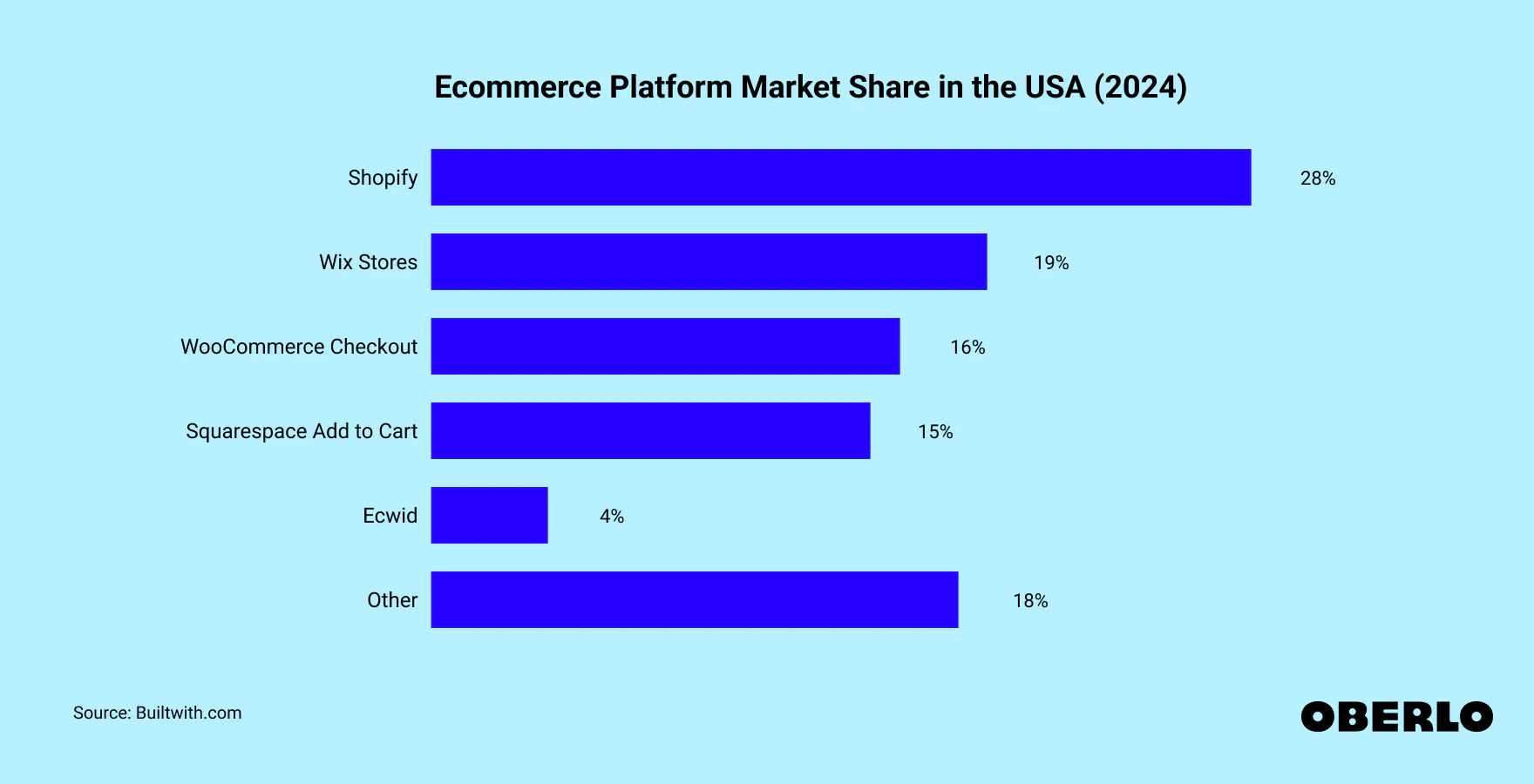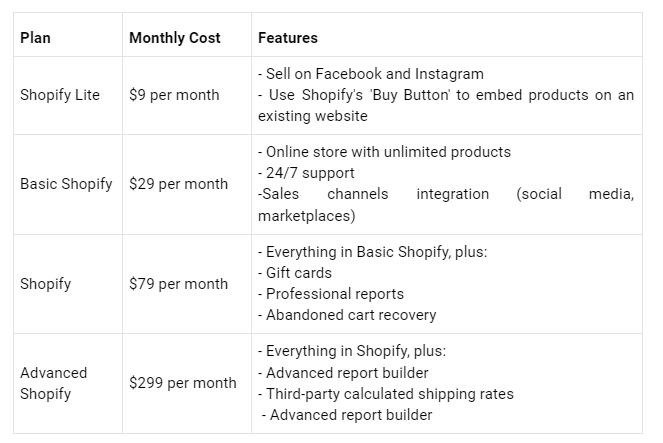Shopify is a shining example of innovation and success in the rapidly changing e-commerce industry. It enables millions of entrepreneurs to transform their ideas into profitable online ventures.
Shopify has established itself as a top eCommerce platform, with over 1.7 million active merchants globally and an astounding $41.1 billion in Gross Merchandise Volume (GMV) in Q4 2021 alone. This thorough examination delves deeply into the complex inner workings of Shopify’s revenue model to reveal the strategies behind its outstanding development and success.
Shopify stays at the forefront of the e-commerce revolution, propelling innovation and enabling companies to prosper in the digital era. Come along as we analyze Shopify’s business model and discover the tactics that have allowed it to grow into a global eCommerce powerhouse.
But what is Shopify? How does it work? What business model does it follow? In this comprehensive blog, we’ll decode everything.
What is Shopify ?
Shopify is an all-in-one eCommerce platform that makes it simple for business owners to design, develop, and manage their online businesses. Since its founding in 2006, Shopify has evolved into a comprehensive solution that provides various tools and features to simplify eCommerce for companies of all sizes.
Shopify offers a user-friendly interface and robust backend infrastructure to support every facet of online retail, from setting up a shop and managing inventory to processing payments and tracking sales.
Shopify has over 1.75 million active merchants and is still growing, making it a household name in eCommerce. Shopify provides a scalable and adaptable solution to fit your demands, regardless of whether you’re an aspiring business owner trying to open your first online store or an established brand looking to expand your online operations.
With a large selection of easily customizable themes, integrated payment methods, and potent marketing tools, Shopify enables companies to design distinctive and engaging online experiences for their clients, spurring expansion and prosperity in the cutthroat digital market.
Shopify Market Size

Source: Oberlo
Shopify has become a significant force in the worldwide eCommerce industry and is still growing in power.
- According to recent figures, Shopify is now the second-largest platform in the US, with a staggering 23% of the market in the US alone in 2021.
- Additionally, Shopify’s Gross Merchandise Volume (GMV) exceeded $200 billion in 2021, demonstrating the platform’s substantial influence on global e-commerce.
- Shopify’s market share is constantly increasing in other countries.
- With a market share of 18% in the UK in 2021, Shopify cemented its status as the top eCommerce platform in the area.
- Furthermore, Shopify has a 20% global market share among eCommerce platforms in 2021, evidence of its broad acceptance and appeal to companies of all kinds.
In the future, Shopify’s market size is anticipated to rise steadily due to several variables, including growing customer preference for online shopping, the growth of digital entrepreneurship, and Shopify’s ongoing innovation in advanced technology. Shopify’s user-friendly design, robust features, and scalable solutions put it in a solid position to take advantage of the increasing demand for eCommerce platforms and hold onto its market-leading position globally.
How Does Shopify Work?
Shopify unifies your online business operations into a single platform, giving you access to orders, analytics, and sales channels through a single admin.
Business owners may use Shopify to create and personalize an online store and sell products online, on mobile devices, and in-person in pop-up and brick-and-mortar stores. With robust connectivity, orders and customer data can be synchronized and handled centrally across various channels, including social media and online marketplaces.
Since Shopify is hosted on the cloud and is entirely secure, you may use it from any internet-connected device without risk. This allows you the freedom to manage your company from any location.
eCommerce enterprises require various tools to handle shipping, payment processing, and inventory management. Business owners may have to invest money and time in connecting these systems.
Because of this, Shopify combines various technologies into one location—your Shopify admin—to provide a comprehensive picture of all your business activity. Additionally, Shopify connects with other apps and tools necessary for conducting business.
Shopify Business Model – What Can You Learn From It?
Understanding Shopify’s business model can help entrepreneurs create profitable e-commerce businesses.
Fundamentally, Shopify is a subscription-based platform that gives retailers the resources and tools they need to set up and run online stores. Let’s examine the main elements of Shopify’s business model and the takeaways for business owners from each one:
Value Proposition
Shopify’s value proposition is rooted in its capacity to provide an all-inclusive and intuitive e-commerce platform, enabling entrepreneurs to establish and expand their virtual enterprises effortlessly.
Shopify adds value by making e-commerce easier for businesses of all sizes by offering features like integrated marketing tools, safe payment processing, and customizable storefronts.
Which are the Main Resources for Shopify?
Shopify’s primary assets consist of:
- Intellectual properties include a vast global database of clients and companies.
- The Shopify business platform is supported and bolstered by technology and IT infrastructure.
- Facilities for research and development.
- More than 10,000 committed employees at Shopify work hard to develop the company and promote sustainable growth.
What are Shopify Channels?
Shopify’s website provides access to its services. Here, you can find all relevant information about the platform’s features, costs, resources, tools, community, online courses, and blogs.
It’s also available as an application on Play Store and App Store.
Customer Segments
Presently, this platform accommodates more than 4.1 million online stores worldwide. Because it enables retailers to sell both physical and digital goods online on social networking platforms, seller marketplaces, and other websites, Shopify is a well-liked platform. Shopify POS (Point of Sale) also allows you to sell products online.
Shopify primarily serves two categories of clients:
- Individual retailers include independent merchants, resellers, and small retail establishments.
- Commercial merchants are sizable businesses that operate in various industries. For instance, well-known companies like Red Bull, Fitbit, Sephora, and Kraft Heinz Co. use Shopify.
Channels
Its primary distribution method is Shopify’s web platform, which allows merchants to manage their businesses, access resources, and sign up for subscriptions. Shopify also uses partnerships with agencies and affiliates, content production, and digital marketing platforms to connect and interact with potential consumers.
Who are Shopify’s Key Partners?
Shopify is a massive e-commerce company that has formed strategic partnerships to guarantee its survival. Critical partners for Shopify are:
- Vendors and suppliers: This group comprises trustworthy companies that provide services, technology, and tools to support Shopify’s ongoing expansion.
- Developers: They assist in creating new Shopify features and smoothly integrating third-party apps.
- Marketers: By utilizing initiatives like affiliate marketing, they support Shopify’s marketing initiatives.
- Alliance Partners: Shopify works on joint marketing and branding initiatives with top businesses across various industries.
Essentially, business owners may take a cue from Shopify’s business model by emphasizing customer service, utilizing partnerships and technology to improve their products, and adopting a customer-centric e-commerce strategy. Through comprehending and implementing these concepts, entrepreneurs can construct and expand prosperous e-commerce enterprises that flourish in the cutthroat digital environment.
Shopify Revenue Model: How Does Platform Make Money?
Shopify generates income from two sources: merchant solutions, which is a component based on merchant performance, and subscription solutions, which is a recurring subscription service. Let’s examine each revenue source in more detail to see how Shopify generates such a big profit:
Subscription-Based Solutions
Shopify makes money by offering subscription options for varying business sizes.
While larger businesses choose Shopify Plus, website owners can incorporate a Shopify store with the ‘Basic’ plan.
The platform also changed how developers split revenue, creating a relationship where developers and merchants benefit from each other’s success.
Merchant Solutions
Shopify provides merchant solutions to supplement the ones offered through a subscription and handle the wide range of features merchants often need, such as working capital financing, shipping and fulfilment, and payment acceptance.
Approximately 70% of Shopify’s revenue came from merchant solutions in 2021.
Let’s examine in-depth how Shopify generates revenue with different merchant solutions:
- Shopify Payments: Shopify’s payment gateway, Shopify Payments, is primarily responsible for revenue generated by merchant solutions, including currency conversion and payment processing fees. Shopify charges merchants 2.4% to 2.9% of each transaction’s gross merchandise value (GMV), depending on the subscription level.
- Advertising: When retailers click on the apps the Shopify App Store’s partners promote.
- Shopify Capital: To expand their enterprises, merchants can use Shopify Capital to apply for loans and obtain cash advances. A store owner can only borrow a maximum of $2 million. However, the cash advance or loan must be paid back within a year. Shopify Capital assesses the loan’s set borrowing cost.
- The amount a user or merchant must pay to get a loan is known as the fixed borrowing cost. Shopify Capital receives a percentage of the merchant’s daily sales revenue until the loan repayment is made.
- Shopify Shipping: This feature enables retailers to oversee their shipments by utilizing Shopify’s shipping partners.
- Shopify Point of Sale (POS): Shopify’s sales channel enables retailers to sell their goods in person and take payments from customers using a mobile device.
- Shopify Email: An email marketing platform that helps retailers handle their advertising efforts. Shopify provides the service for free up to a point, after which merchants must pay.
Shopify Pricing Plans
Shopify provides many options to meet companies’ requirements in different development phases. Each plan includes various features and functionalities, so merchants may select the one that best fits their needs and budget.
An outline of Shopify’s pricing tiers is shown below:
Final Thoughts
Because of its unique business strategy, Shopify can flourish in an ecosystem that is important and relevant to the needs of modern merchants. Put more simply, consumers need to be sold for them to want to buy.
Shopify has always been a model of creativity and a never-ending hunt for goods and services that address present-day and emerging needs.
It’s almost impossible to find an eCommerce platform that matches Shopify’s level of simplicity and smooth integration with sales channels. Shopify’s many selling potential and essential business management capabilities outweigh its few shortcomings, which include essential SEO tools, restricted store design options, and simplistic blogging features. There is just no platform that compares to Shopify in terms of ease of use, sales volume, room for expansion, and cost for both new businesses and seasoned retailers.
Let’s hope Shopify keeps introducing new features and making the lives of eCommerce business owners more manageable, as it was hard to imagine earlier.
Good luck to you!

